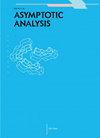基于软化正则化的分数阶导数Jacobi谱计算方法
IF 0.9
4区 数学
Q2 MATHEMATICS, APPLIED
引用次数: 0
摘要
本文构造了一种基于Jacobi - gauss正交的近似Caputo分数阶导数的Jacobi谱配置方案。给出了各向异性Jacobi-weighted Sobolev空间的收敛性分析。在此基础上,给出了用安抚正则化方法求解含噪声数据的Caputo分数阶导数的收敛速度。最后,通过数值算例验证了该方法的有效性和稳定性。本文章由计算机程序翻译,如有差异,请以英文原文为准。
A Jacobi spectral method for calculating fractional derivative based on mollification regularization
In this article, we construct a Jacobi spectral collocation scheme to approximate the Caputo fractional derivative based on Jacobi–Gauss quadrature. The convergence analysis is provided in anisotropic Jacobi-weighted Sobolev spaces. Furthermore, the convergence rate is presented for solving Caputo fractional derivative with noisy data by invoking the mollification regularization method. Lastly, numerical examples illustrate the effectiveness and stability of the proposed method.
求助全文
通过发布文献求助,成功后即可免费获取论文全文。
去求助
来源期刊

Asymptotic Analysis
数学-应用数学
CiteScore
1.90
自引率
7.10%
发文量
91
审稿时长
6 months
期刊介绍:
The journal Asymptotic Analysis fulfills a twofold function. It aims at publishing original mathematical results in the asymptotic theory of problems affected by the presence of small or large parameters on the one hand, and at giving specific indications of their possible applications to different fields of natural sciences on the other hand. Asymptotic Analysis thus provides mathematicians with a concentrated source of newly acquired information which they may need in the analysis of asymptotic problems.
 求助内容:
求助内容: 应助结果提醒方式:
应助结果提醒方式:


